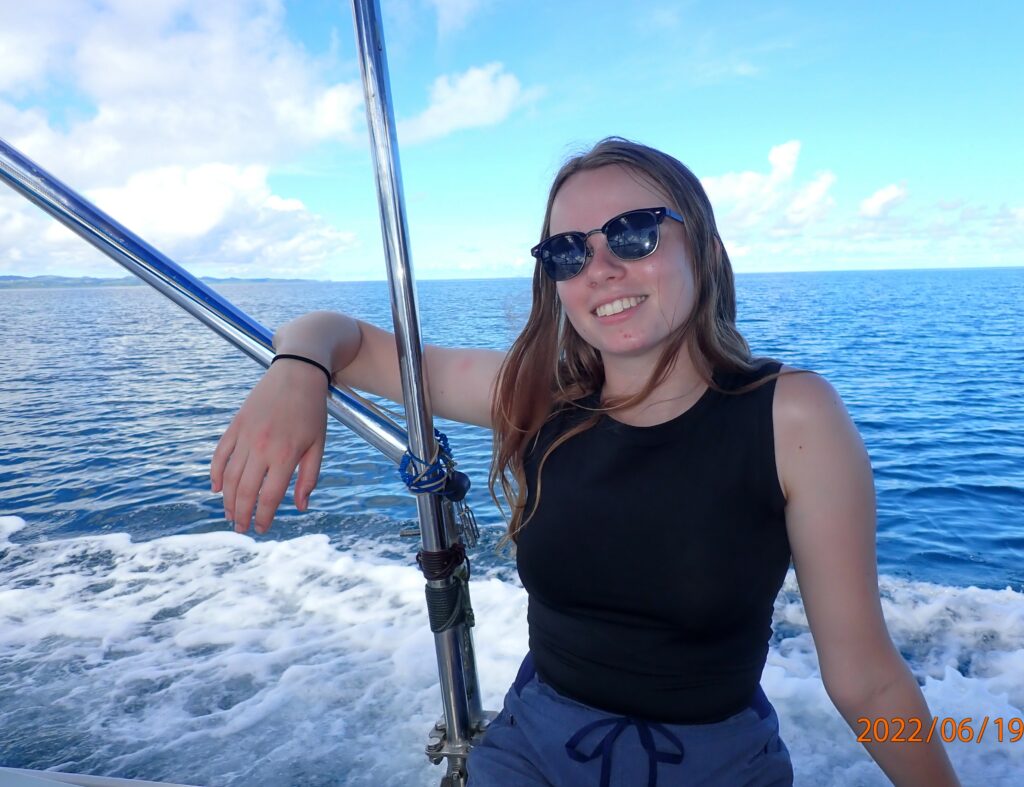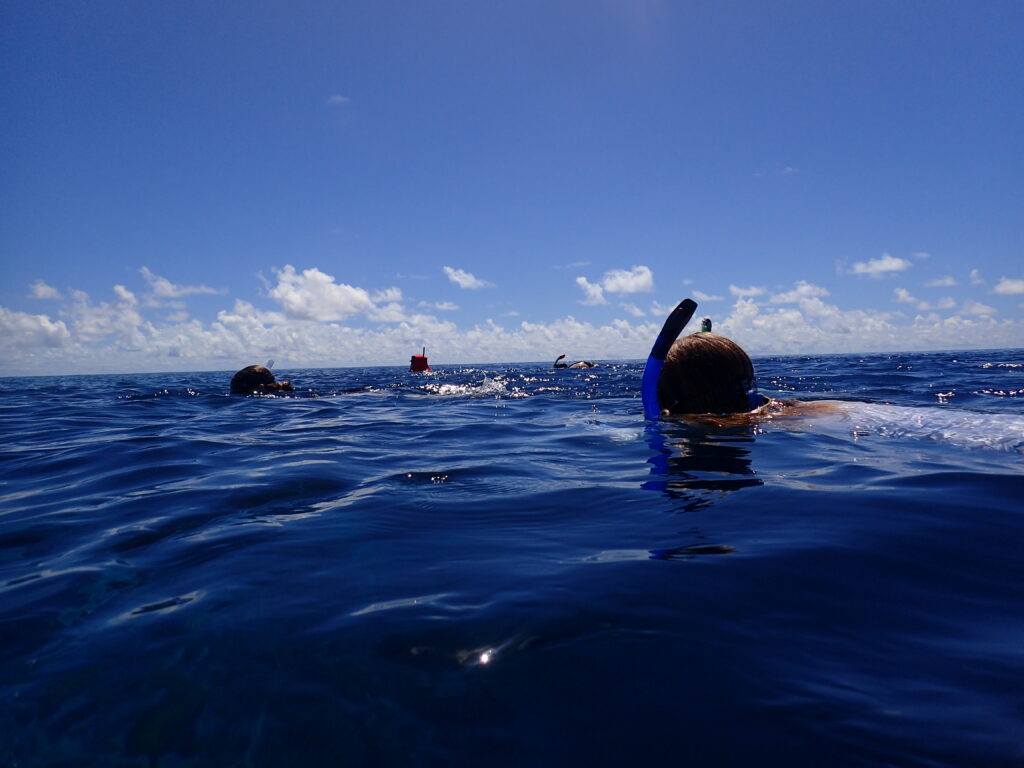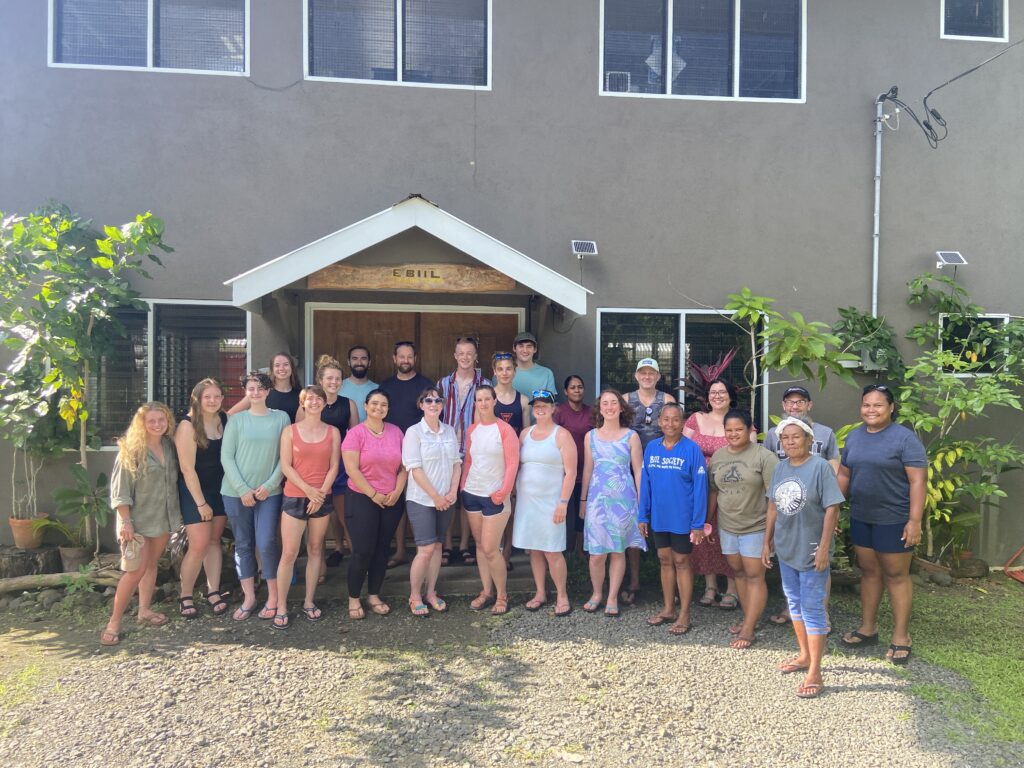After a breakfast of leftover pizza and pineapple, we walked to the end of the pier and waited for the boats to take us to Ebiil Channel. We made friends with the neighbor dog and relaxed in the shade. The glassy blue water made for a pleasant boat ride out to the snorkeling spot. We were all excited to see the channel that the Ebiil Society was named after.

The Ebiil Channel has been protected as a marine reserve for about 20 years, following the most devastating coral bleaching event that Palau has faced in 1998. The Ebiil Channel was somehow spared from the event, which inspired its protection. The protected area is about four miles wide and is a vital spawning ground for over 50 fish species, many of which are important food species. Ann described the reef as a magical area with an overwhelming number of fishes and colors. She said that it looks like a 100 pack of crayons exploded in the ocean, which got our hopes up for the most amazing snorkeling of our lives.


Upon leaving the boat, many of us were disappointed, seeing mostly shades of beige. For others, this was one of the first coral reefs they ever saw, quickly making it one of the most diverse ecosystems they have seen. We saw all types of fish species and even saw sharks, dolphins, and jellyfish. Nemo and Gill were even spotted in the area.


Once we got back to Ebiil, Ann compared the current state of the reef to what it has looked like in the past 20 years. Firstly, the reef is 0.36 degrees above what it normally is which can cause many effects on the reef. “The reef is dead,” she said. She spotted two types of algae that have choked and killed the coral that once flourished. The skeletons of the coral remain, but they are lifeless. From this, many fish species have been on the decline, in both quantity and quality. There was once two-foot long fish in this reef, but now it is difficult to see fish that are half the size. She could not believe the devastation that had happened since she last visited within the last year.

She mentioned that she must speak to the community and other researchers about it, and she wonders if a coral bleaching event has been happening without their knowledge. Many corporations pay in order to pollute which does not solve many issues as these payments are usually seen as loans. Due to the long history of this reef, there is evidence that this ecosystem will bounce-back and continue to promote local biodiversity with a healthy reef.

We wrapped up at Ebiil and headed off to Koror!

